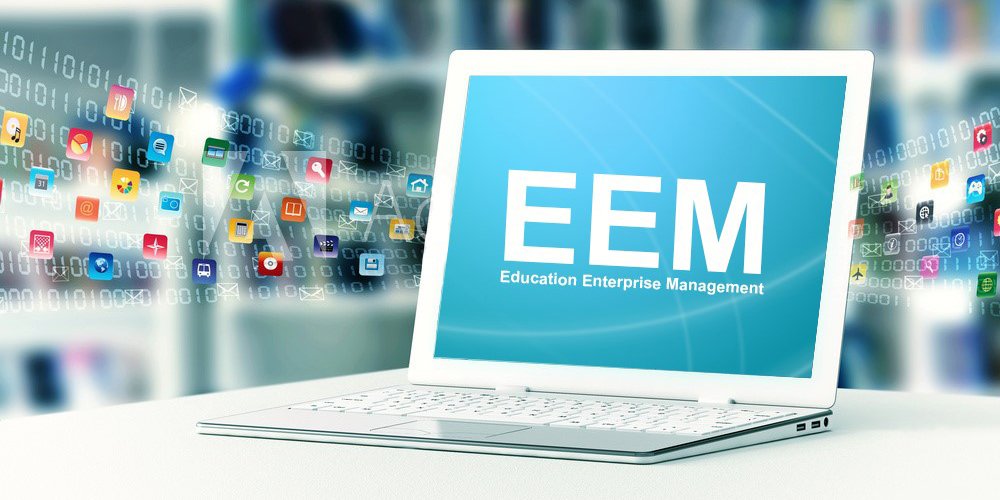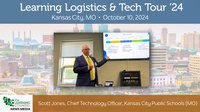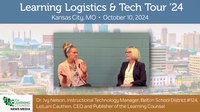When James Kapptie was hired as Director of Instructional Technology in Park County Schools in Cody, Wyoming, he was tasked with finding a way to coordinate all of the district’s important teaching and learning systems and instructional data in one secure, safe place. “I wanted our student information, assessments, curriculum, dashboards, standards—everything that involves teaching and learning—in a single, simple system,” Kapptie said. “The more I looked, the more I realized that what I was searching for didn’t yet exist in K-12 education.”
What James finally found was a concept called education enterprise management (EEM). EEM is the idea that teachers, administrators, parents, and other stakeholders who need information can securely get what they need to see, when they need to see it, and how they want to access it. EEM is a solution to an ongoing ed tech problem: Few systems “talk” to each other, and teachers are asked to use multiple systems with different user interfaces and multiple log-ins. As a result, teachers actually use only the one or two systems that are required for compliance.
“But, what if we could securely access all of the important student data as well as analyze it in the same system where we create and deploy our assignments and assessments? What if we also included our attendance and gradebooks and automated state reporting?” Kapptie asked. “In a perfect world, we would also include curriculum, SPED forms, response to intervention (RTI), master scheduling, automated progress reports, parent communication, and early-warning triggers—everything needed to surround our students with a system of support to help individualize instruction for every single kid.”
That’s the idea behind EEM. For a few decades now, education technology has been primarily focused on compliance and on what some would call “ornamental” technology: hardware or software that looks cool and seems trendy but fundamentally has not changed the way we teach. Better devices don’t always translate to better education, but EEM puts and keeps the focus on instruction and student learning.
Ed tech companies and school districts have been working on integrating systems for a long time, with varying degrees of success. Part of the issue has been that technology companies usually do not think like teachers. Some of the best companies have been able to bridge the chasm between education and technology, but many companies and their software programmers haven’t gotten it. Then tend to think like programmers and design systems to perform a certain function in a certain way. This is not always conducive to good teaching practices. Also, as companies try to “tie together” systems through LTI, API, or other integration approaches, functionality gets lost and data gets corrupted. Districts like Park County that are embracing EEM took a step back and reviewed their educational systems holistically to ensure that this divide between technology and education could be bridged.
Other districts are using EEM because they want to individualize instruction. Dr. Steve Boynton, superintendent in Lincoln County, Oregon, has tasked his teachers to re-order all the standards they address into a progression and tie Bloom’s Taxonomy levels in to the instructional practices used throughout the district. The district will then measure individual students’ progress toward proficiency on the standards they are assigned, adding interventions and supplemental instruction when and where they are needed.
“We needed a system that is customizable enough to meet our needs and still give us the necessary data dashboards and analytics to see how all of our resources are being used and to what effect,” said Boynton. “We also wanted to look at other varying factors like attendance, teacher professional development, behavior measures, and item analysis of assessments to get a real clear picture of what is working for which kids. Without thinking of this on an enterprise level, we could not do everything needed to help our students.”
EEM takes some ideas from business enterprise software and applies them to teaching and learning. By looking at instruction in all its aspects, districts are able to see how different variables influence student learning: How does attendance relate to student performance? In what ways? And to what measurable effect? Which professional development programs have the most positive impact on student performance? Which curricular resources have the greatest positive effect on student learning? Without coordinating the data, we cannot know just how wide-ranging the impact is; we can only guess.
Not only does EEM help facilitate individualized instruction, it can also save a tremendous amount of money that can be reallocated to instruction. Kapptie said, “When we move fully to EEM software, we will be able to eliminate, and stop paying for, five separate software systems. We are transitioning over a three-year period to full enterprise level for all of our instructional practices. When complete, we will pay roughly 40% of what we used to spend on software licenses for one system that does it all.”
As budgets get tighter and communities ask more and more of their districts, EEM is a path to the future. As Boynton put it, “It only makes sense that our Web pages, our learning management system, our student information system, and most other instructional support software is in one consolidated database. That way, we can access it through a single user interface to do what we need to do to help kids and measure whether or not it’s working the way we need.”
Patrick Leonard is a 30-year veteran of public education. He spent the first 18 years as a high school English teacher and basketball coach and has spent the past decade in educational technology as an executive/consultant for several educational software companies. He is currently chief operating officer at MIDAS Education.











